Looking back from the corn era
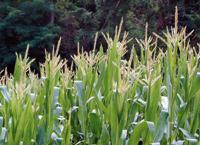
Exercise: Think about what you've eaten in the last few days. Perhaps meat, fish, vegetables, fruit, rice, spaghetti, bread, yogurts, etc. Everything. You have at your disposal food from all over the world and many ways to cook them. But today's wide variety of food has hidden the situation. It is a privilege for your parents. And your parents were also privileged over your grandparents. Surely they would have to eat the same thing every day. Beans and talo every day, hard diet.
Today we eat the cake at traditional agricultural fairs, which we have become the symbol of traditional food. Corn flour mixed with salt and water, in the form of cake and roasted in talo iron, almost pure in corn. With the beans that our grandparents and grandmothers ate every day, without studying whether it was a traditional meal or not.
Corn and beans can be planted together in the garden. They are complementary plants, among other things because legumes enrich the soil in nitrogen and, in addition, the stem of one serves to support the other. Both plants have adapted well to the climate of the Basque coast and are observed jointly and individually. But since when are they so common in Basque agriculture?
From America
The answer is related to the discovery of the new world. The conquerors brought from America and not only corn and beans, but also potato, tomato, pepper and many other plants. XVI. In the twentieth century, Castile was very powerful, so the Iberian peninsula was a bridge between Europe and America; most of the products entering Europe passed through Spain. Many animals did not arrive, but the plants they brought from this new world were incredible.
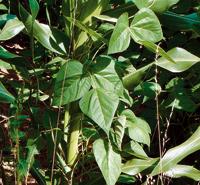
be planted together in the garden. They are complementary plants that serve to sustain the stems of one.
However, this does not mean that they succeeded in Europe from the beginning. It was not clear how and when they had to be planted, and the best techniques were not known for the crops to be copious, nor the consequences that could have the coincidence with the native species.
In fact, American plants entered the experimental phase in Europe. The people showed their distrust of those strange plants brought from afar. However, there were also reasons to favor the planting of these plants, especially hunger. XV. In the 20th century, the European population grew enormously, and potatoes and corn were huge resources to feed this large population. The success of these plants was conditioned by the situation of each country.
Basque Country
Since the corn arrived in Euskal Herria until it was produced in large quantities, it took a long time. First sessions XVIII. They were made in the 19th century, but maize had a real success in the following century, coinciding with deforestation and the boom in livestock. Therefore, the corn we consider traditional is the XIX. It spread throughout Euskal Herria in the 20th century, not before.
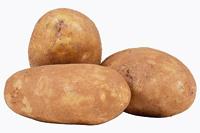
The potato story is similar. For over two hundred years it has been cultivated in Euskal Herria. It was brought by the Royal Society of Friends of the Country in 1772. Curiously, it was not brought from Castile, but from Ireland, where it was widespread. The Llanada alavesa was ideal for the elaboration of potatoes, so a great bet was made for the tuber. In Araba and Galicia, the government forced the peasants to plant potatoes and they were very successful. Fortunately, their diet was not based solely on legs.
In Ireland, however, that caused a big surprise for the Irish: the plague of mildiu, a potato disease. The fungus Phytophthora infestans caused the oxidation and death of potato plants. The great dependence of the potato was such that the disease caused the most famous hungry in Irish history. Between 1846 and 1850 a million people died, and society received a great shock. Among other things, by using potato as a currency, poverty spread and many Irish had to flee to the United States.
Chestnuts and nuts
In Euskal Herria there was never that dependence. Gradually tomato, corn, beans and potato were planted. The American plants conquered the Basque fields. But what did he eat before that conquest? What was the basic food? Maybe wheat? No.
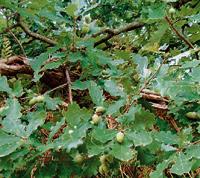
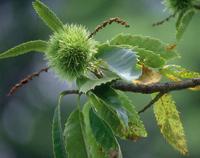
Due to the orography, traditionally large quantities of wheat and barley were not planted in the Basque Country. Wheat appears in the myths related to Basajaun, where the Basajaunes had to steal wheat grains. In short, these myths recognize that wheat planting was not a local tradition. No. Another type of food should be the basis of the diet, something that was easy to store.
Before expanding corn consumption, nuts were the basis of food. Although they are collected once a year, they can be stored lengthened and crushed to make flour. This ensures food throughout the year, and that's why it was the basic meals.
In Galicia, for example, until the arrival of the potato, chestnut was the most appreciated food in the basic diet. If you dry the chestnut, crushing the curd you get a sweet flour that can be used in the kitchen as corn or wheat. And even if you don't make flour, dried chestnut is very suitable to keep it long.
In Galicia, traditional ways of preparing chestnut have survived more than in Euskal Herria. Of course, these techniques were discarded when the cooks started using corn and potato, but they have not completely disappeared. Neither the techniques nor the names: the dry chestnut, which is still called pilonga in Galicia, is a term that in Euskal Herria is only used for indigaztain, but which in its origin means dry chestnut.
Other nuts were used in the basic diet by the peoples of the north of the peninsula. Nuts and hazelnuts were typical. Today they have lost importance and are the most used desserts. But it was not like that before, and so it shows, for example, the walnut sauce.
Acorn was also a human food for years before the corn and potato revolution. And not only in the Basque Country, but in the area of Asturias, for example, the acorn has had a great importance and some of its valleys still prepare cakes of acorn flour, in the form of talos. The truth is that the acorn has been a pork meal in recent centuries, because it has an acidic crumb. However, not all acorns are the same. The art acorn is tasty and edible, while the oak is very rough.

Of course, the fruit of the beech, the beech, has had a history similar to that of the acorn; in recent centuries man has exploited the tree and has not eaten the fruit, but it is edible and of good taste. However, competition between plants from America was excessive, especially in agriculture. Corn, potato and tomato, besides being sweet, should not be collected in the forest, but could be made next to the house. In fact, American plants not only affected the diet but also transformed the forest by systematically stopping planting chestnut, walnut and other trees.
As for the drink, apple stands out as a basic product. Apple rot fast and water, but from both you
get a drink that is not lost, cider. Cider has a minimum duration of one year and can be mixed with more water to make large amounts of drinks. In addition, it can be stored in tanks without any danger.
Meat, fish
Chestnuts, acorns, nuts, apples... It is true, however, that the inhabitants of Euskal Herria did not eat only basic foods. They killed animals and have always been hunters and gatherers; Basque forests were rich in seasonal produce. In addition, the diet of coastal villages has been largely fisheries based. But
to eat every day and survive throughout the year, foods that were not lost were essential and daily. This means that in addition to keeping the flour stored, they always had milk and eggs.
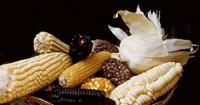
We also need flour and other basic foods every day. But today's opportunity is enormous and we do not live under the rule of one food. In addition, by eating a product purchased at the supermarket, we are eating both plant, animals, minerals and oil. Of course, we are still in the time of the plants brought from America: potato, tomato, pepper, corn, etc. In today's diet we also need all of them.
Whale as a diet supplementSince the Middle Ages, the whale market in Euskal Herria was developed. Every time a whale was hunted, the people had a huge economic boost. Capturing two or three whales a year meant a good year for that town. Also for those in the area, since on the coast also participated the villages that were not in business, transport, cellar, songbook, etc. The whale brought money because it gave everything. On the one hand, it provided fuel (oil) and on the other, raw material for the elaboration of various products (whale beards), and of course, food (whale meat itself). Therefore, the diet of coastal peoples was associated with this great animal. |





